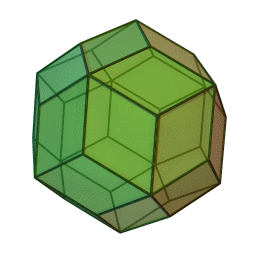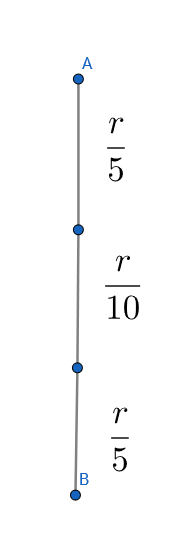That's a lot of useless wire
Some useless wire are made for interesting purpose. Like the one that I had, had a total resistance of . Which is then cut into 60 equal parts to form a regular Rhombic Tricontahedron as shown below.

If the resistance between any two opposite points is . Then enter your answer as .
Image credit : wikipedia
This question is part of the set Platonic Electricity .
The answer is 75.
This section requires Javascript.
You are seeing this because something didn't load right. We suggest you, (a) try
refreshing the page, (b) enabling javascript if it is disabled on your browser and,
finally, (c)
loading the
non-javascript version of this page
. We're sorry about the hassle.
Relevant wiki: Transformation of Resistances (Star to Delta and Delta to Star)
Great Problem! Fun to solve!
If you apply Delta-wye Transformation on every point where three lines intersect, and combining parellel lines through each edge , suprizingly you will get an icosahedron, with a resistance of r = 2 3 Ω between any two adjascent nodes.
Now observe, that by symmetry the potentials at points G , C , D , E , F are equal. So no current will flow from G C , C D , D E , E F , F G .
So we can join the points G , C , D , E , F .
Similarly, the potentials at H , I , J , K , L are equal. So no current will flow from H I , I J , J K , K L , L H . So these points can also be joined.
So the circuit simplifies to:- Now from A to B, the resistances are in series, so adding them gives
R
=
2
1
r
Now from A to B, the resistances are in series, so adding them gives
R
=
2
1
r
We know that r = 2 3 Ω .
So putting this we get R = 4 3 Ω . So the answer is 7 5